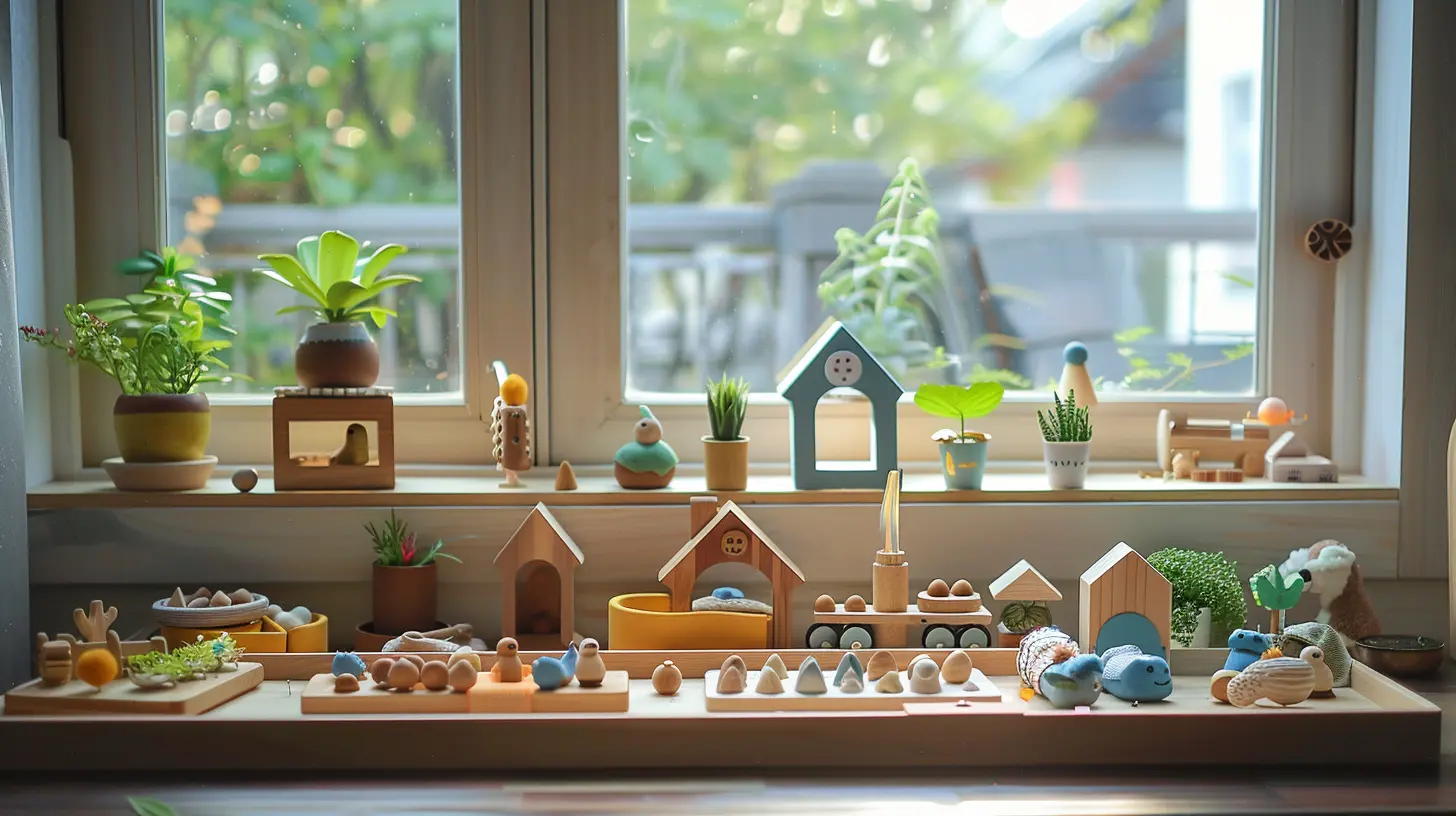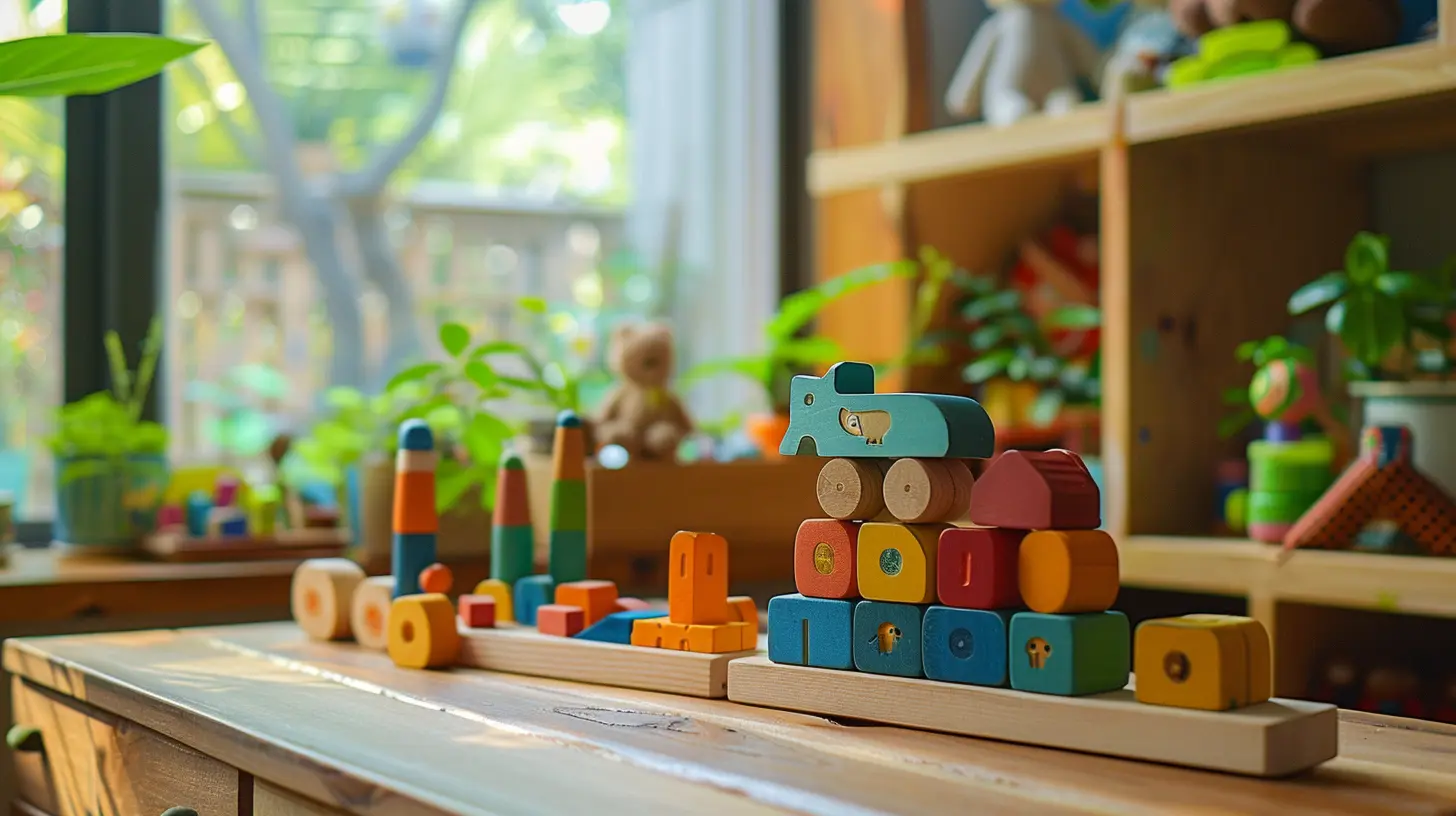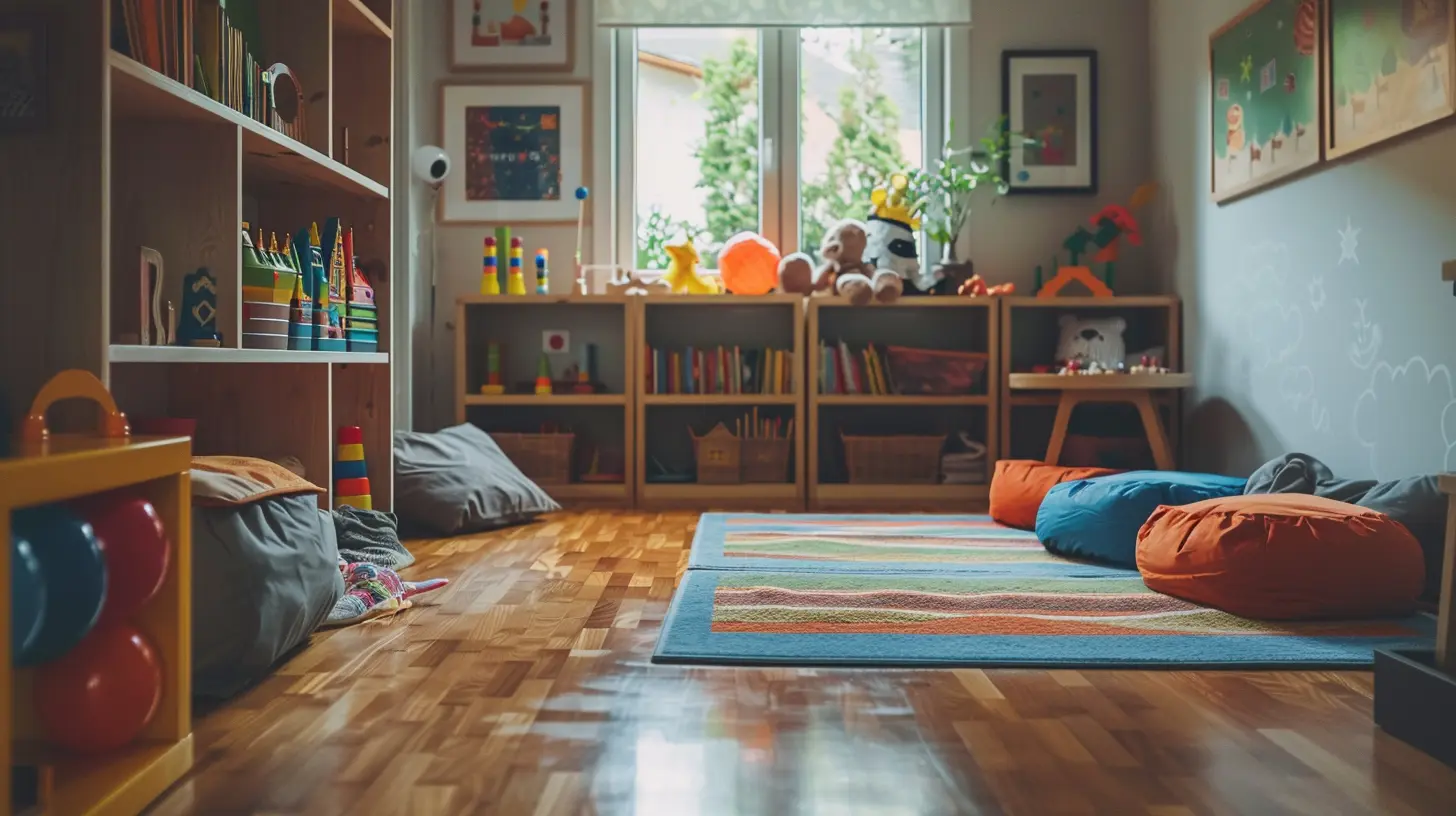Encouraging Independent Play with Little Set-up
16 July 2025
Let’s be real—parenting can be a full-time juggling act. Between making meals, folding laundry, answering emails, and trying to finish a cup of coffee before it goes cold (again), we often wish our kids had a “play” button we could just press. Enter: independent play. It's every caregiver’s dream and, guess what? It’s totally achievable—without turning your living room into a toy store explosion.
In this post, we’ll dig into how to encourage independent play with little set-up, so your child stays happily engaged while you catch a breather (or just pee in peace). Yep, it really can be that simple.
What Is Independent Play, Anyway?
Independent play is when your child is happily playing by themselves without constant input from you. No, it’s not you ignoring your kid. It’s actually super healthy for their development. Kids learn how to problem-solve, use their imagination, and build confidence—all by playing on their own.But here’s the kicker: many parents think they need fancy, educational toys with batteries, lights, and a million pieces to make this happen. Spoiler alert—they don’t.
Why Independent Play Matters
Before we jump into the how, let’s talk about the why.1. Builds Confidence and Creativity
When kids play alone, they become their own directors, creators, and problem-solvers. Whether they’re stacking blocks or pretending to run a zoo, they’re learning to trust their own ideas.2. Supports Emotional Regulation
By navigating play independently, kids learn to deal with small frustrations, delays, and triumphs. It’s like emotional weightlifting.3. Gives Parents a Lifeline
Let’s not sugarcoat it—sometimes you just need a break. Independent play is that magical window where you can clear your inbox, prep dinner, or just breathe.
The Myth of the Perfect Playroom
Ever scroll through Pinterest and see those picture-perfect Montessori playrooms with wooden toys placed just-so on open shelving? Lovely, but totally unrealistic for most of us. Guess what? Kids don’t care about aesthetics—the "fun factor" is what counts.You don’t need a separate playroom or Instagram-worthy shelves. A corner of the living room with a bin of well-loved toys is plenty. The goal is to make play accessible, not magazine-worthy.
Laying the Groundwork: Setting the Stage for Independent Play
Okay, so how do we actually get kids to play on their own, especially without turning setup into a full-time job? Here’s the lowdown.1. Keep It Simple
Less truly is more. A handful of open-ended toys does way more for your child’s imagination than a toy with a million buttons.Good options include:
- Blocks
- Dolls and figurines
- Cars and trucks
- Art supplies
- Play kitchen items
- Magnetic tiles
- Cardboard boxes (yup, plain ol' boxes—magic in disguise)
These toys don’t dictate how to play, which means kids have to come up with their own ideas. That’s creativity gold.
2. Rotate Toys Rather Than Buy More
Think of toy rotation like having a wardrobe for your child’s imagination. Instead of giving access to every toy all the time, stash some away and rotate them every week or two. When they reappear, they feel fresh—even exciting.Bonus? Less clutter = less overwhelm (for both of you).
3. Create a Yes Space
Designate an area where your child can safely explore without constant intervention. This could be a soft rug in the corner with a few toys or a small table with coloring supplies.The “yes space” helps eliminate the endless “Mom, can I…?” or “Is this okay?” because everything in that space is already approved. Freedom + safety = independence jackpot.
Tuning into Your Child’s Age and Stage
What independent play looks like depends a lot on your child’s age. Let’s break it down:Babies (6–18 months)
Yep, even babies can enjoy solo play! Think safe floor space, soft toys, stacking cups, sensory baskets, or even a mirror to explore their reflection. Just stay close by, because safety first.Toddlers (18 months – 3 years)
At this stage, attention spans are short—but growing! Try toys they can manipulate: shape sorters, chunky puzzles, push cars, nesting cups. Keep play sessions short (5 to 15 minutes at first) and build from there.Don’t expect miracles—persistence is key. Expect a lot of check-ins or requests to play "with you." That’s okay. Encourage, then step back.
Preschoolers (3–5 years)
Now we’re talking. Preschoolers have big imaginations and love to role-play. They can engage in more complex scenarios—running a pretend store, playing with action figures, or building an elaborate train track.This is a golden age for creativity, so give them props and get out of the way.
How to Encourage (Without Controlling)
So you're ready to hand over the reins—now what?1. Start Together, Then Step Away
Children often need a little warm-up. Sit down and play for a few minutes, then say, “I’m going to check the laundry—keep playing with your train!” Offer praise afterward: “Wow! You built such a long track while I was gone!”They may not even notice you left once they’re in the zone.
2. Set a Predictable Routine
Kids love knowing what comes next. If independent play has a regular slot in your day—after snack time or before lunch, for example—they’ll come to expect it. This builds habit and comfort.3. Avoid Interrupting
If they’re deep in play, don’t swoop in and comment unless truly necessary. Even praise—well-intentioned as it is—can break their concentration. Let them stay in their flow.4. Don’t Force It
Some days it just won’t happen. That’s okay. The goal isn’t perfection, it’s building a long-term ability to play alone. Keep offering the opportunity without pressure.Low-Prep Independent Play Ideas by Age
Let’s get practical. What can you actually hand over to your kid right now without a long setup? We’ve got you covered.For Toddlers
- Stacking blocks- Simple matching games
- Sensory bin (rice, scoops, small cups)
- Puppet play
- Push-button books
> Pro tip: Put dry pasta in an old spice shaker and give them a spoon = 15 minutes of quiet.
For Preschoolers
- Magnetic tiles and vehicles- Play dough (with tools)
- Sticker books
- Simple puzzles
- Pretend kitchen or tool sets
- Tape and cardboard = their new favorite craft
> Try a “fake mailbox” with envelopes and a crayon so they can “send letters.”
For School-age Kids
- LEGO free-builds- Drawing prompts
- Comics to "write and draw"
- Mystery scavenger hunts
- Stop-motion videos (if you’re cool with screen time)
- Puppet theater from a cereal box
Sometimes the best activities come from their own imagination—you just need to provide the spark.
Encouragement is Everything
Let’s not underestimate the power of a well-timed “You’re doing great!” Kids thrive on positive reinforcement. When you notice their effort without taking over their play, you’re letting them know they’re capable.Examples could be:
- “You came up with such a cool game!”
- “I love how you made up your own story.”
- “You worked hard on that puzzle—look what you did!”
Those little phrases build confidence and plant seeds for more independent play in the future.
What If My Kid Absolutely Refuses?
Been trying all this and still met with, “Mama, play with me!” every time? You’re not alone.Here are a few gentle strategies:
- Set a timer for short play blocks and increase over time.
- Use a favorite toy to play “hide and seek” and let them find it solo.
- Create a visual checklist with play options they can choose from.
Most importantly—don’t give up. Like any skill, it takes time, practice, and patience.
Final Thoughts: Progress Over Perfection
At the end of the day, encouraging independent play isn't about getting your child to entertain themselves for hours on end. It’s about helping them develop skills and confidence to explore the world in their own way. Some days they’ll play alone for 30 minutes, other days you’ll be their full-time playmate—that’s normal.You’re not just getting a break (though that’s definitely a bonus); you’re giving your kid the gift of self-direction, curiosity, and resilience. And all it takes is a few quiet minutes, a cozy corner, and a sprinkle of imagination.
all images in this post were generated using AI tools
Category:
Parenting HacksAuthor:

Tara Henson
Discussion
rate this article
1 comments
Jessica McBride
Great tips! Independent play fosters creativity and confidence. Simple setups make it easy for parents and kids!
July 28, 2025 at 4:00 AM

Tara Henson
Thank you! I'm glad you found the tips helpful. Encouraging independent play truly benefits both kids and parents!


